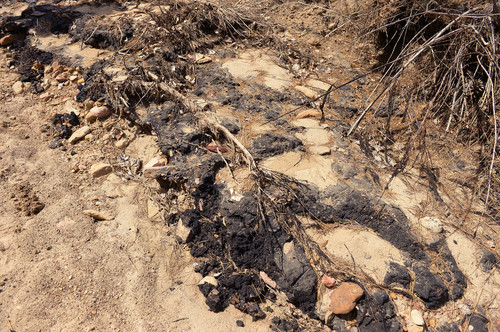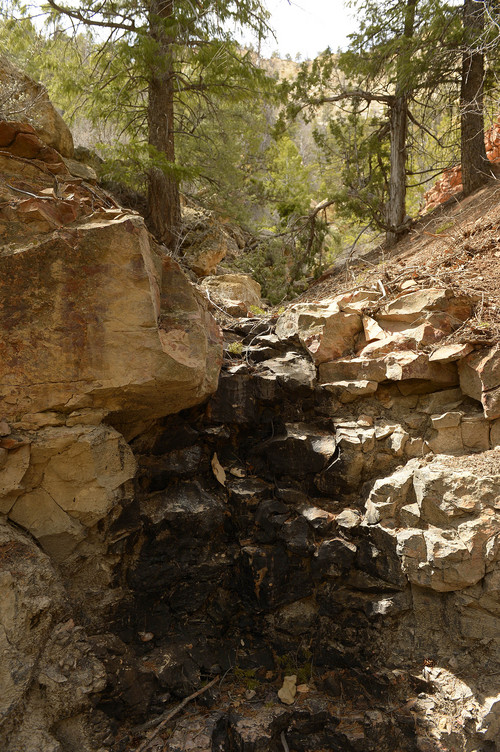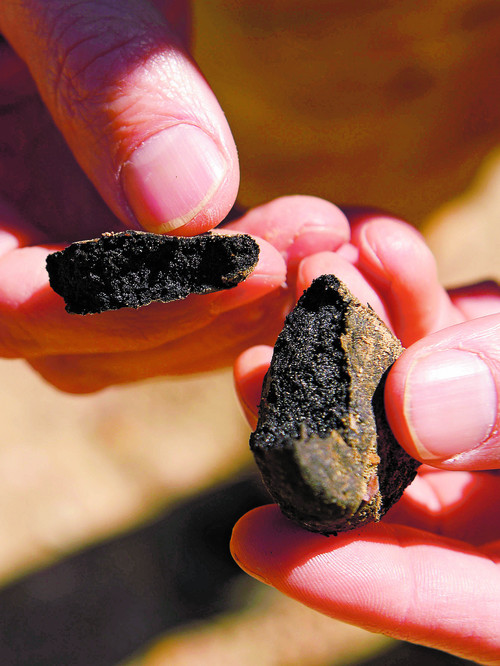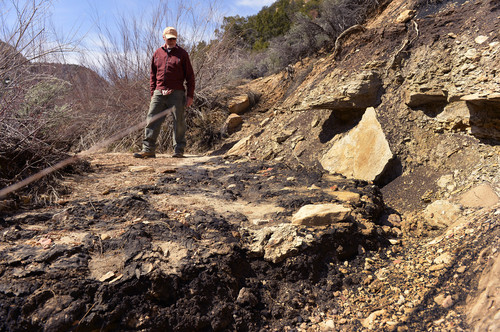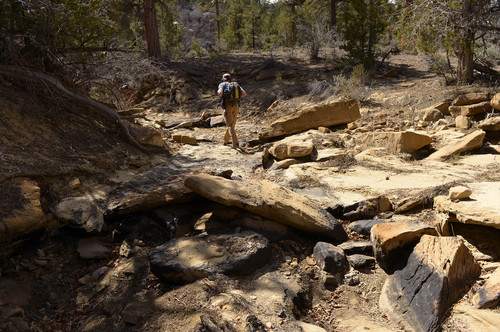This is an archived article that was published on sltrib.com in 2014, and information in the article may be outdated. It is provided only for personal research purposes and may not be reprinted.
Federal officials are now finding old oil deposits in drainages in the Grand Staircase-Escalante National Monument near the one found carpeted with oil last month.
The new finds suggest that petrochemical contamination from the Upper Valley oil field is more widespread than previously known, yet has only gotten serious consideration in recent weeks.
The oil appears to have been deliberately covered with dirt and gravel in a manner consistent with remediation techniques of the 1970s. Monument spokesman Larry Crutchfield emphasized the oil found in Pet Hollow, Horse Spring Canyon, Canaan Wash and Bear Hollow appears to be stable and probably does not pose an immediate danger to the environment, but officials intend to recover soil and water samples for testing.
"The good news is that the resource impacts appear minimal. There are no dead animals and dead plants and the older oil appears stable," Crutchfield said. "There is no evidence of recent spills."
Addressing the mess in nearby Little Valley Wash is a bigger priority for the Bureau of Land Management, which runs the monument.
Officials examined neighboring washes after hikers last month found Little Valley Wash clogged with oil from the 50-year-old oil field perched on a rugged mesa at the headwaters of the Escalante River.
Many of these spills may have occurred long before Citation Oil and Gas Corp. took over the field from Tenneco in the mid-1980s, but at least three spills from old pipelines have occurred here since 2012, according to BLM and Dixie National Forest, which administers most of oil field. Citation officials have not responded to any requests for comment since the Tribune began inquiring into the spills three weeks ago.
BLM officials remain puzzled by the Little Valley Wash oil, which appears to be from at least two distinct spills that have left a long trail that is difficult to interpret, according to Crutchfied. Samples are being tested to determine when it was released.
Much of the oil there clearly came from a recent spill that went unreported in the last year or two. But Crutchfied says there is evidence that some, if not most, of the oil caked in the wash is the result of a spill or spills decades ago — even though a written record of such releases has yet to turn up.
Local residents have come forward to say they worked under BLM direction on remediation crews in the drainages that feed Escalante Valley's Alvey Wash. They reported shoveling dirt onto the spilt oil years ago, according to Crutchfield.
Back then it was common to burn or bury spilt oil. Crews would throw soil and gravel on top of an oil spill and return a few days later to pile on more.
Layering of oil and dirt is apparent in the 1.5-mile carpet of oil in Little Valley Wash, Crutchfield said.
This crusted-over material has a tarry constancy, yet it may be difficult to determine its age. Oil breaks down at a predictable rate if its exposed to air, but that process is hampered when oil remains covered.
Other evidence indicating the Little Valley's oil is old includes the absence of dead vegetation and the huge amount of oil present. The nearby well's current 17-barrel-a-day production is too meager to account for all the oil on the ground. Years ago, Well No. 27 produced up to 400 barrels, according to BLM officials, but now it produces that much saline water a day. After leaving the well this water is separated from the oil and must be re-injected into the ground.
Crutchfield reasoned that if all the oil in the wash came from a recent spill, there would have been a far greater release of salty water that would have taken a toll on the plant life.
But the vegetation appears to be healthy and no signs of saline contamination have been found.


